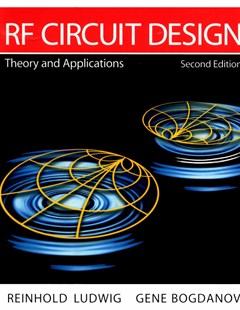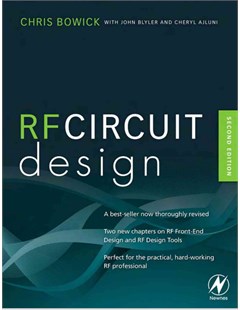RF Circuit Design: Theory and Applications
Students and practicing engineers equipped with rudimentary exposure to circuit theory and/or microelectronics can read this book and grasp the entire spectrum of high-frequency circuit principles involving passive and active discrete devices, transmission lines, filters, amplifiers, mixers, oscillators and their design procedures. Lengthy mathematical derivations are either relegated to the appendices or placed in examples, thereby separating dry theoretical details from the main text.
2009
Students and practicing engineers equipped with rudimentary exposure to circuit theory and/or microelectronics can read this book and grasp the entire spectrum of high-frequency circuit principles involving passive and active discrete devices, transmission lines, filters, amplifiers, mixers, oscillators and their design procedures. Lengthy mathematical derivations are either relegated to the appendices or placed in examples, thereby separating dry theoretical details from the main text.
The organization of this text is as follows:
+ Chapter 1 presents a general explanation of why basic circuit theory needs to be modified as the operating frequency is increased to a level where the wavelength becomes comparable with circuit dimensions.
+ Chapter 2 then develops the fundamental concepts of distributed circuit theory.
+ Chapter 3 introduces the Smith Chart as a generic tool for dealing with the periodic impedance behavior on the basis of the reflection coefficient.
+ Chapter 4 presents networks and flow-graph representations, and how the terminal conditions can be described with so-called scattering parameters. The Prtfact xv network models and their scattering parameter descriptions are utilized.
+ Chapter 5 to develop passive RF filter configurations. To address active devices.
+ Chapter 6 provides a review of key semiconductor fundamentals, followed by their circuit models representation.
+ Chapter 7. The impedance matching and biasing of bipolar and field effect transistors is taken up.
+Chapter 8. Chapter 9 focuses on a number of key high-frequency amplifier configurations and their design intricacies, ranging from low noise to high power applications.
+ Chapter 10 introduces the reader to nonlinear systems and their design, covering oscillator and mixer circuits
Reinhold Ludwig; Gene Bogdanov. RF Circuit Design: Theory and Application (second edition). Pearson, 2009.
Ngành CÔNG NGHỆ KỸ THUẬT ĐIỆN TỬ , VIỄN THÔNG (7510302)
 |  |  |
Thứ Năm, 08:18 17/03/2022
Copyright © 2018 Hanoi University of Industry.